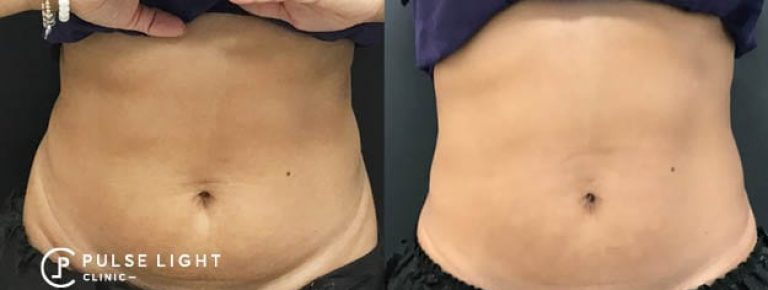Unlocking the Secrets of Freezing Fat Cells for Weight Loss
Fresh advances in the science of weight loss take center stage in “Unlocking the Secrets of Freezing Fat Cells for Weight Loss.” The article enlightens you on the intriguing mechanics of fat cells, their fat-burning counterparts known as brown cells, and the discovery of a fat-burning hormone found in muscle cells. It also touches on the highly debated topic of whether fat cells truly disappear. But most intriguingly, it explores the revolutionary method of freezing fat cells as a novel approach to weight loss. Brace yourself, as it’s time to engage in a fascinating journey through the body’s fat-burning system.
Understanding Fat Cells
Before we dive into the specifics of freezing fat cells for weight loss, it’s essential to understand what fat cells are and the role they play in your body. Also known as adipocytes, fat cells are a type of cell that specializes in storing energy as fat. They form a significant part of the adipose tissue, which also includes fibroblasts, stem cells, and various immune cells.
The Function of Fat Cells
Fat cells perform more functions than you might think. Beyond their notorious role in weight gain, fat cells are critical for your overall health. They store surplus calories in an efficient way so you can mobilize the fat stores when you need energy. Moreover, they secrete hormones and other substances crucial to metabolism and regulation of insulin’s efficacy. Essentially, your body needs fat to function.
Role of Fat Cells in Weight Loss
When it comes to weight loss, it’s a common misconception that the number of fat cells decreases. In reality, the size of these cells reduces as they release their stored fat for use as energy, making you look thinner. It’s this principle that several weight loss strategies, including frozen fat cell technology, are founded on.
Types of Fat Cells
Your body has two distinctly different types of fat cells – white and brown. White fat cells are what we usually refer to when talking about body fat. They store energy and release hormones when the body is low on food. On the other hand, brown fat cells, often referred to as good fat, help burn energy to generate heat.
Details About Brown Fat Cells
Understanding brown fat cells and their workings provide crucial insights into various weight loss methods, including the revolutionary technique of freezing fat cells.
Definition of Brown Fat Cells
Brown fat cells, or brown adipose tissue, are a type of body fat that’s activated when you get cold. Unlike white fat cells, which store calories, brown fat burns energy, which is why it’s often termed “good” fat.
The Importance of Brown Fat Cells
Brown fat cells play a significant role in the body’s thermogenic metabolism—a process of burning calories to produce heat. They’re packed with mitochondria, which gives them their brown color and helps convert energy from food into heat rapidly. This effectively promotes weight loss and explains why these fat cells are pivotal in the fat freezing process.
Activating Brown Fat Cells for Weight Loss
Interestingly, you can strategically increase your brown fat cells’ activity to boost weight loss. Cold exposure—either through environmental conditions or controlled processes like cryolipolysis (fat freezing)—is a well-documented way to stimulate brown fat cells. Regular exercise and good sleep can also improve brown fat activity.

The Lifespan of Fat Cells
Just like other cells in your body, fat cells have a lifespan. They grow, mature, and eventually die. But what does this mean for weight loss?
The Growth and Development of Fat Cells
Fat cells don’t appear overnight. They originate from stem cells and develop through a process called adipogenesis. When your body needs more storage for fats, new fat cells are formed from precursor cells. Interestingly, once these fat cells are matured, they remain in your body for years, even decades.
Do Fat Cells Ever Go Away?
This leads us to a popular question – do fat cells ever go away? Scientifically, even when fat cells have shrunk during weight loss, they can easily expand again if the body’s energy balance is not maintained. However, fat cells can die, and the body naturally replaces them at a rate of about 10% per year.
How Fat Cells Die
When fat cells die, they release their contents into the bloodstream, which is then used or eliminated by the body. This natural process is similar to what happens during fat freezing, albeit fat freezing targets specific areas and accelerates fat cell death.
Fat-Burning Hormones in Muscle Cells
Muscle cells play a significant role in how your body loses fat. One key element in this process is fat-burning hormones.
Identifying Fat-Burning Hormones
Certain hormones like cortisol, testosterone, human growth hormone (HGH), adrenaline, and insulin influence how your body stores or burns fat. Many of them can be produced or influenced by muscle activity and can therefore play a role in weight loss.
How Fat-Burning Hormones Work
These hormones stimulate the breakdown of fat cells for energy. For example, during exercise, your body releases adrenaline, which then signals the body to start breaking down fat cells to use as fuel.
Effects of Fat-Burning Hormones on Fat Cells
The hormones trigger fat burning by binding to the fat cells and triggering the release of stored fat to be used as energy. They also increase metabolism, thereby helping the body to burn more calories.

Introduction to Freezing Fat Cells
Now that we’ve covered the basics of fat cells, it’s time to delve into the modern, non-invasive, and surprisingly effective method of fat reduction: freezing fat cells.
Definition of Freezing Fat Cells
Freezing fat cells, also known as cryolipolysis, is a non-invasive treatment used to reduce fat. It involves using controlled cooling to target and kill fat cells without affecting the surrounding tissue, leading to a reduction in the fat layer’s thickness.
How Freezing Fat Cells Works
In this procedure, a device is used to apply controlled cooling to the targeted fat cells. The fat cells beneath the skin are frozen and subsequently die. The body then naturally eliminates these dead cells over time, leaving a more sculpted you.
Benefits and Risks of Freezing Fat Cells
Freezing fat cells comes with several benefits, including targeted fat reduction, minimal discomfort, zero recovery time, and long-lasting results. However, like any procedure, it also has potential risks, like temporary redness, swelling, bruising, and skin sensitivity.
The Science Behind Freezing Fat Cells
There’s solid science that underpins the concept of freezing fat cells. Two key scientific principles at work are cryolipolysis and apoptosis.
Exploring Cryolipolysis
Cryolipolysis is the process that underpins fat freezing technology. It’s based on the principle that fat cells are more vulnerable to temperature changes than other types of cells. Hence, when exposed to cold temperatures, fat cells undergo a process of natural removal without impacting other tissues.
The Process of Apoptosis in Fat Reduction
When the fat cells are exposed to the extreme cold during the procedure, they eventually die through a process called apoptosis, or programmed cell death. The body then naturally processes and permanently removes these dead fat cells over time.
Scientific Studies Supporting Fat Freezing
Numerous scientific studies back the efficacy and safety of fat freezing. These studies observe significant fat reduction in specific areas after one or more cryolipolysis treatments, with patient satisfaction levels being reasonably high.

Benefits of Freezing Fat Cells
The convenience and efficacy of cryolipolysis have made it a popular choice among many looking to reduce stubborn fat pockets.
Weight Loss through Freezing Fat Cells
One of the prominent benefits of fat freezing is weight loss. Cryolipolysis can be used to target troublesome areas that don’t respond to diet or exercise, providing a way to achieve visible and lasting results.
Improvements in Body Sculpting
Freezing fat cells is more about body sculpting than overall weight loss. It targets and reduces fat in specific areas, helping to contour your body in ways that diet and exercise can’t always achieve.
Boosting Confidence and Self-Esteem
By improving physical appearance and body shape, fat freezing often contributes to a boost in confidence and self-esteem. It’s not just about looking better; it’s about feeling better about yourself.
Potential Risks and Side Effects of Freezing Fat Cells
Like any procedure, fat freezing isn’t without risks and potential side effects. It’s important to fully understand these before deciding on the treatment.
Understanding the Risks
The risk linked to cryolipolysis is relatively low because it’s a non-surgical and non-invasive treatment. However, some complications might include transient nerve damage or paradoxical adipose hyperplasia, a very rare effect where fat cells increase in size and firmness instead of dying.
Common Side Effects Post-Procedure
After the procedure, you may experience temporary numbing, redness, swelling, bruising, or tingling in the treated area. Most of these side effects are mild and subside within a few weeks.
People Who Should Avoid Fat Freezing
While fat freezing is generally safe, it’s not suitable for everyone. People with cold-related conditions like cryoglobulinemia should avoid this treatment. It’s also not a solution for obesity but rather a tool for reducing localized fat deposits.

Comparing Fat Freezing with Other Weight Loss Methods
While freezing fat cells offers a unique and non-invasive approach to reducing stubborn fat, other methods may be more suitable for some individuals.
Traditional Exercise and Dieting
Exercise and a balanced diet remain the most effective and healthy ways to lose weight and promote overall wellbeing. However, these methods may not always yield desired results for stubborn local fat deposits, which is where fat freezing can be beneficial.
Liposuction and Other Surgical Methods
While liposuction can remove larger amounts of fat, it’s invasive and comes with risks associated with surgery and anesthesia. In contrast, fat freezing is a safer, non-invasive procedure with minimal risks and downtime.
Non-Invasive Fat Reduction Techniques
There are other non-invasive procedures for fat reduction, like laser treatment and ultrasound. However, these methods differ from fat freezing in terms of the techniques used, recovery time, side effects, and results.
Success Stories and Case Studies of Fat Freezing
As the popularity of fat freezing grows, so do the number of success stories and supporting data.
Testimonials of Fat Freezing Patients
Many satisfied customers have shared their positive experiences of enhanced body shape and increased self-confidence after undergoing a series of fat freezing sessions. These stories provide real-world proof of the treatment’s effectiveness.
Quantitative Results from Clinical Studies
Clinical studies on fat freezing have shown that the procedure can reduce the thickness of the fat layer by up to 25%. These studies also report high satisfaction rates among patients.
Long-Term Effects of Fat Freezing in Patients
While the full results of fat freezing can take several months to show, studies indicate that the effects are long-lasting provided the individual maintains a healthy lifestyle.
Freezing fat cells provides a unique approach to fat reduction that’s effective, safe, and non-invasive. It’s not a magical fix for weight loss, but if you’ve been struggling with stubborn fat pockets, then fat freezing might be something to explore. Always consult with a professional for personalized advice and solutions.



Pingback: The Reality Of Fat Cells: Do They Ever Go Away?
Pingback: Unlocking The Secrets Of Fat Cells For Weight Loss